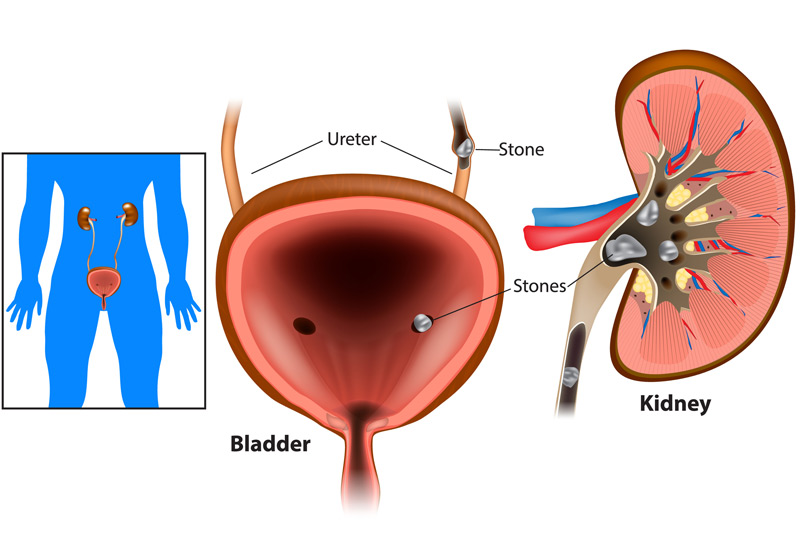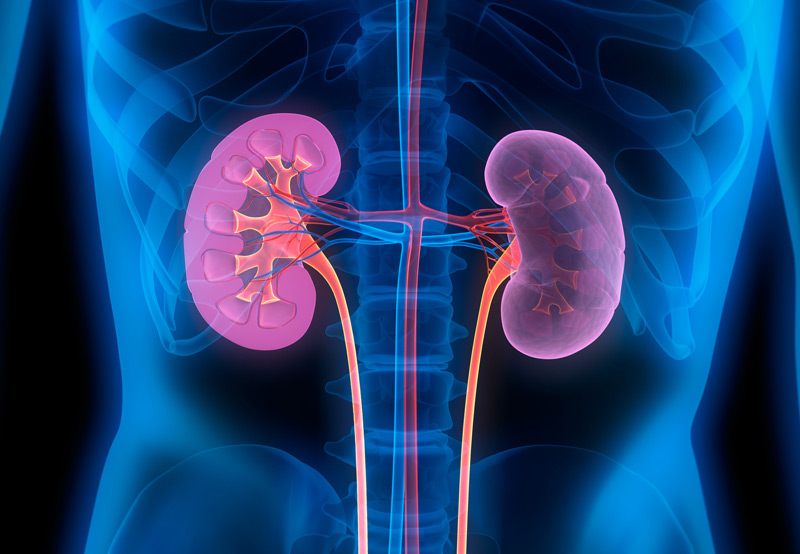

Percutaneous nephrolithotomy (PCNL) is a minimally invasive procedure done to surgically remove large or irregularly shaped kidney stones.
What Are Kidney Stones?
Kidney stones may become lodged in the kidney or urinary tract and cause a range of symptoms, including pain. PCNL surgery may provide relief.
When salts and minerals accumulate and bind together in the body, this can lead to the formation of kidney stones. Dehydration is often associated with kidney stones. Both men and women are at risk of developing kidney stones.
Smaller kidney stones may pass in urine on their own, but the process can be very painful. Patients with large, stubborn stones may need medical treatment to break them up and make it easier for the patient to pass them through the urinary tract. When other treatments have been ineffective, patients may need to undergo percutaneous surgery.

Before Surgery
The urologist will need to review the patient’s blood and urine test results before performing the procedure to check for infection or other issues. An ultrasound, CT scan, or X-ray imaging may be done to help pinpoint the location of the stone in the kidney.
If the kidney stones are too large for treatment with a ureteroscopy, the patient may need to undergo PCNL. This treatment is usually done to treat stones that are two centimeters in diameter or larger.
Who Is A Candidate?
Percutaneous surgery is usually a last resort when other treatments, such as extracorporeal shock wave lithotripsy or ureteroscopy, have failed.
Patients may also need surgery if:
- The stone is larger than two centimeters in diameter
- The stone is lodged in the ureter
- The blockage threatens kidney function
- The patient is bleeding
- The patient has an infection
- The patient is suffering from intense, prolonged pain
What To Expect During Surgery
The physician will make a small incision made in the back to access the kidney. He will then use a miniature fiberoptic camera, also called a nephroscope, to view the stone’s location.
Nephrolithotomy refers to removal of the stone through a tube. If the surgeon uses high-frequency sound waves to break up the stone before it is removed, the procedure is called a nephrolithotripsy. This treatment is one of the most effective ways to remove a kidney stone.
Compared to other types of surgery, the incision made for this procedure is only about one centimeter in size. The entire procedure is completed in just 20 to 45 minutes.
After surgery, the physician may require further imaging to make sure the fragments of the stone have been cleared.
The Recovery Process
After surgery, the patient will need to avoid pushing, pulling, and lifting heavy objects for two to four weeks. However, they will likely be able to return to work within one week, depending on their unique situation.
It’s important to call a physician if the patient notices signs of an infection or experience pain. Patients who need a follow-up appointment may undergo imaging tests to check for any remaining stones and to ensure urine is draining properly from the kidney.
